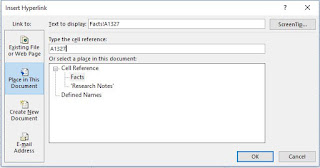 |
| My great grandfather Giovanni Sarracino did business with 2 Bronx breweries. |
 |
| My great great grandfather Antonio Saviano wore this ribbon in his coffin. |
 |
| My great grandfather Giovanni Sarracino did business with 2 Bronx breweries. |
 |
| My great great grandfather Antonio Saviano wore this ribbon in his coffin. |
 |
| Was my first immigrant ancestor a shrewd businessman? |
And speaking of what documents can tell us:
 |
| It may look like a slice of heaven to you, but your ancestor's hometown gave them reason to emigrate. |
You may also enjoy:
 |
| We collect so many documents. Can you return to where you found them? |
 |
| This annotation lets me—or anyone—return to the original file easily. |
You may also enjoy:
Ten years ago I needed to take control of my family tree digital files. I had a growing collection of census forms, draft registration cards, vital records, and more.
I'd already settled on my preferred way of saving these files:
But my well-named image files, sitting in all those different folders, didn't show me the big picture.
How could I see at a glance every document I have for a particular ancestor? And how could I quickly see which documents are missing?
Use the Technology You Know
That's when I turned to my old pal, Microsoft Excel.
For years I'd been using Excel spreadsheets on the job. I tracked progress on large-scale projects. I built formulas to show an accurate cross-section of the content on a website I manage. I kept tabs on my freelance hours for invoicing.
Why wouldn't I use Excel to create a genealogy research inventory?
My genealogy "document tracker" has 1540 lines right now. I have one person on each line. There are columns for each type of document I collect. The last column gives me space to note what's missing.
For example, for one of my grandmother's cousins, the "To find" column contains this:
One Spreadsheet Tells the Whole Research Story
Now it's time to get even more value out of my document tracker.
I've been looking at sample research logs on different genealogy sites. A research log is a disciplined way for you to note:
The research logs I found were much more complicated than I wanted. For starters, I'm satisfied with the list above.
 |
So I've added a second sheet to my document tracker Excel file and named it Research Notes. The first column is for the person's name. I added four more columns to match the four items in my list.
How to Start Using Your Research Notes
The next time I'm trying to find a specific document—like the elusive 1940 census for the Raffaele Saviano family—I'll add a line to the new Research Notes worksheet.
I might note that I tried searching for the family using only their first names. And that I used Americanized versions of their Italian names. I'll add that I tried this on Ancestry.com and FamilySearch.org.
When I'm ready to call it quits for the moment, I'll add a note about what I think I should try next.
Finally—and this is a cool Excel trick—I'll add a link from this research note to Raffaele Saviano's line on the first worksheet where all of his documents are listed. And I'll add a link from there back to his line on the new Research Notes worksheet.
My favorite thing about linking between the sheets is this: You can reorganize the lines on either worksheet and not break the links. You can sort them, add new lines in the middle, do whatever you need to do, and the links will still work.
Here's how to create a link between the two worksheets in a single Excel spreadsheet file:




Now make a mental note of the line number for this ancestor on the Facts worksheet. Go to the Research Notes worksheet and link back in the same way.
Click the links to see them work.
Now you can have all of these facts at your fingertips. It's 100% searchable, sortable, and update-able. Download a sample spreadsheet to build on.
My favorite thing about Excel: I know it can do a million more things I haven't even thought of yet.
For more detail on the document tracker, see:
 |
| The witnesses to this marriage were a key to a puzzle. |
 |
| Brother-in-law Michele Castelluzzo, and ditto. |